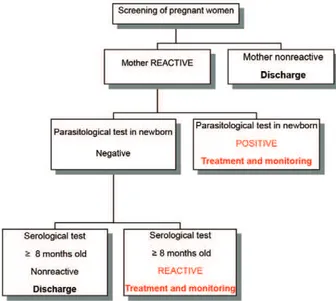Congenital Chagas disease: an update
Texto
Imagem


Documentos relacionados
The objective of this study was to evaluate, through blood culture and PCR, the results of the ELISA for Chagas’ disease in the screening of blood donors in the public
Os principais resultados deste projeto inseriram-se na funcionalização dos substratos algodão e de termopoliolefinas (TPOs) com os agentes encapsulantes que detiveram uma
em Barthes (1997), Libido dominandi, que permeia todas as formas de relações sociais. A população local, de Florianópolis, convive com os visitantes em seu momento de ser turista.
cruzi infection in Brazil and regions in 2010, we applied the result of the estimated pooled prevalence of Chagas disease in pregnant women at national level, extrapolating to the
Epidemiological analysis of congenital syphilis in the State of Ceará, verifying the prenatal care for pregnant women who had their children diagnosed with congenital syphilis,
cruzi forms in the placenta and umbilical cord in cases of congenital Chagas’ disease 2,7 has led to the proposal of a correlation between congenital infection and presence of
gallinaceum to invade the vector epithelium were in fact an in vitro artifact; the Ross cells are believed to represent cells that have lost their integrity and some of
FINDINGS Climate change appears to play a major role in the reemergence of Chagas’ disease and T. infestans in Chile. The distribution of both T. infestans and Chagas’